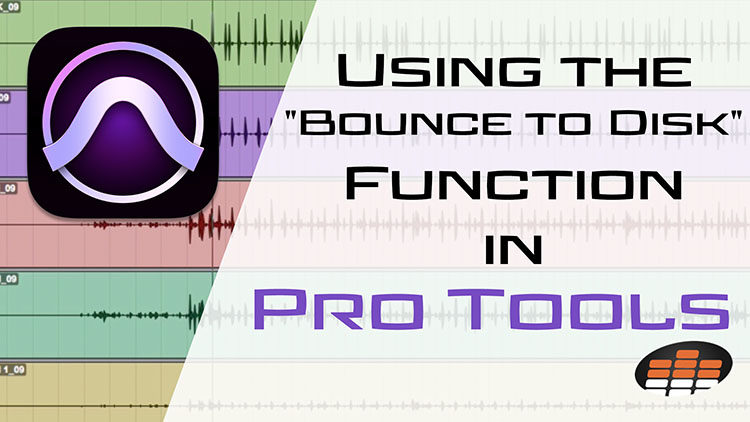Jon Connolly is the most sought-after Pro Tools instructor in the world. Having been with Avid since the company first started out as DigiDesign in the early ‘90s, he quickly became their Product Specialist in Los Angeles, offering Pro Tools installations, training, and support to major studios like Warner Bros., Universal, Capitol, The Village, Record One, Westlake, and more.
Today, Jon is a Pro Tools Master Instructor for Avid, travelling the world and training Pro Tools users of all levels. He also teaches at the world-renowned Berklee College of Music.
In this quick tip, he shows us how to use the “Bounce to Disk” function in Pro Tools!
Once you’ve finished recording and mixing a song in Pro Tools, you’ll need to be able to bounce out the entire project as a single stereo file. This is so you’ll have access to it as a single WAV or MP3 file for listening, uploading, sending to your client or a mastering engineer, etc.
- RELATED: How To Bounce Stems In Pro Tools
Pro Tools has a very convenient Bounce to Disk option which lets you quickly and easily turn a whole session into a 2-track file. One of the first things to take into account is having a Master Fader in your project. Not only will this provide the output source for the bounce, but it lets you add some additional processing at the end, such as a limiter.
It’s important to know that Bounce to Disk requires a selection to be made which tells Pro Tools the start/end points for the bounce. You don’t have to make the selection across every track, however; one will work just fine. Start at the beginning of your project. Holding the shift key, click the end of the project to make a selection for bouncing.
With a selection made, you can open the Bounce to Disk window by using Option + Command + B. From the top of the window, Bounce Source tells Pro Tools which output(s) to record. In this case, bouncing from the Main output on our Master Fader will ensure the entire song is included.
Next, you can select file type, such as WAV or MP3. This part is pretty self-explanatory. If you choose WAV, you have the option of checking the Add MP3 box, which does just that! You can also adjust the bit-depth and sample rate.
For file format, you’ll want to make sure you use Interleaved. This means you’re bouncing the whole project as a single stereo file. You can also name the bounced file and choose where it saves. By default, Pro Tools sends it to a Bounced Files folder in the project. Finally, with Offline checked, Pro Tools bounces the song faster than realtime.





